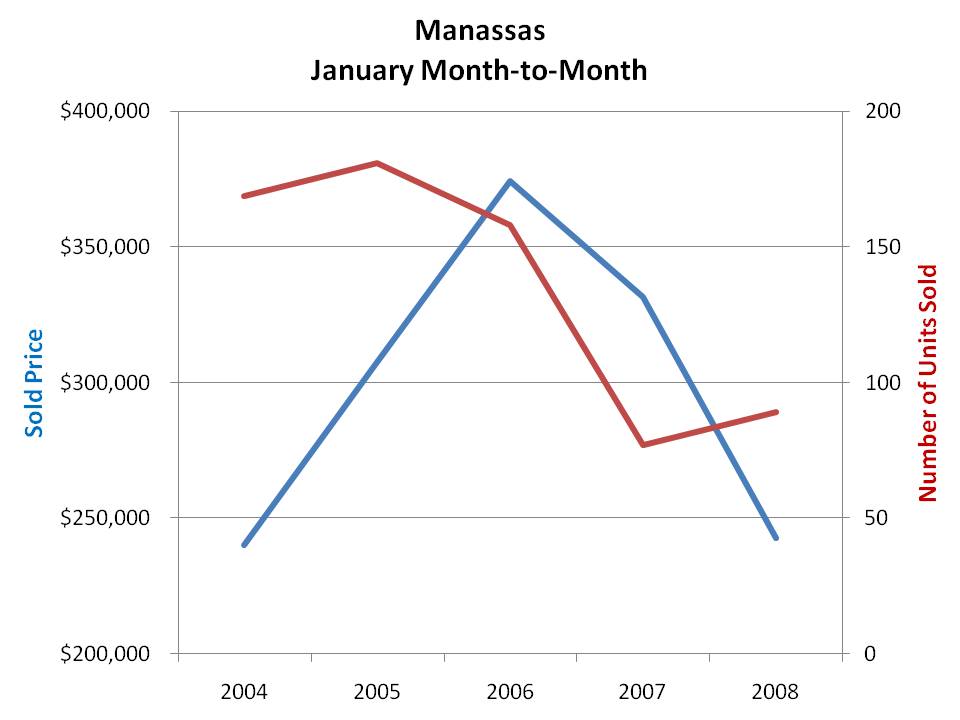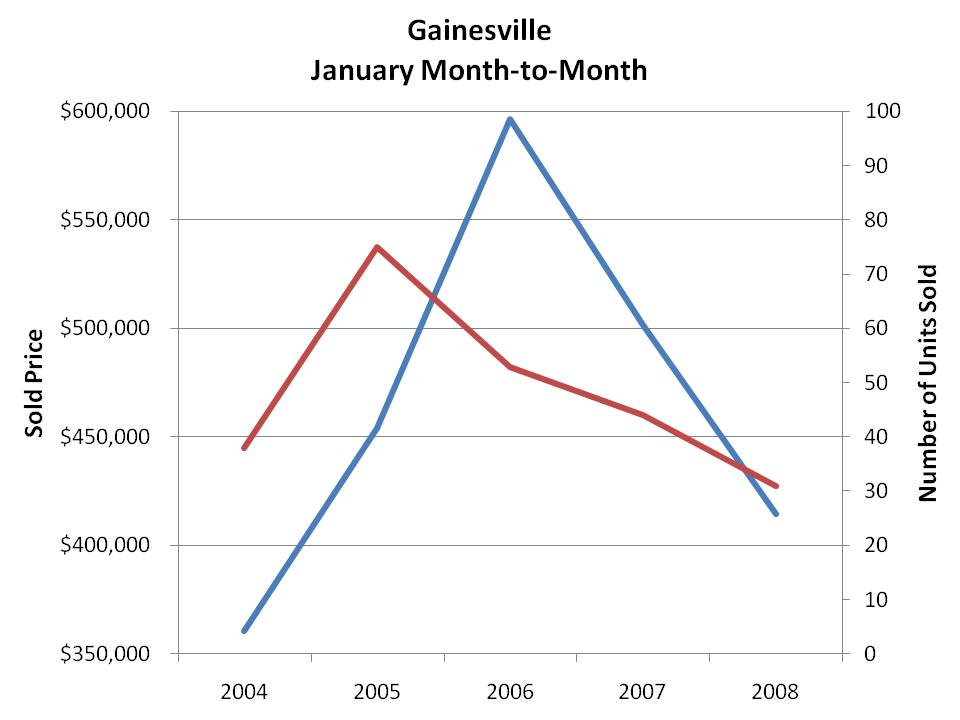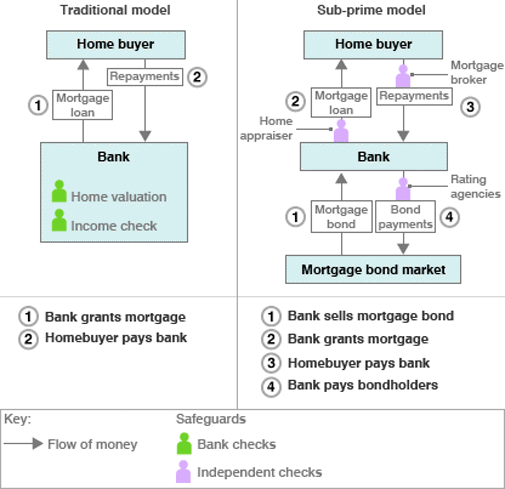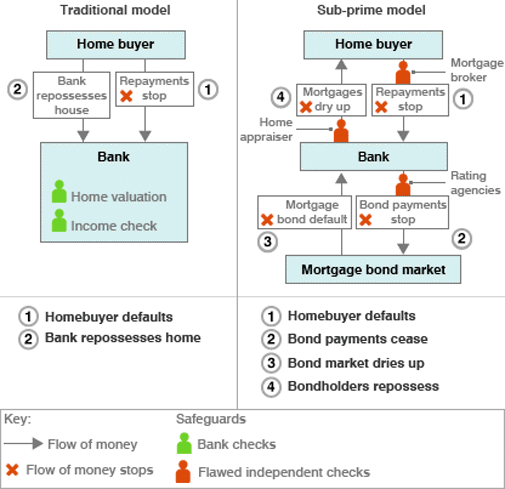Friday, September 26, 2008
Friday, February 22, 2008
NO SIGNS OF STABILIZATION
a relatively low real federal funds rate now appeared appropriate for a time
to counter the factors that were restraining economic growth, including the
slide in housing activity and prices, the tightening of credit availability, and
the drop in equity prices. Members judged that a 50 basis point reduction in the
federal funds rate, together with the Committee’s previous policy actions, would
bring the real short-term rate to a level that was likely to help the economy
expand at a moderate pace over time. Still, with no signs of stabilization in
the housing sector and with financial conditions not yet stabilized, the
Committee agreed that downside risks to growth would remain even after this
action. Members were also mindful of the need for policy to promote price
stability, and some noted that, when prospects for growth had improved, a
reversal of a portion of the recent easing actions, possibly even a rapid
reversal, might be appropriate.
To read more, CLICK HERE!
Saturday, February 9, 2008
Manassas - January 2008 Trend Report

Residential Homes trended DOWN by 26.9% (January Year-to-Year)
Original Price: $287,960
Sales Price: $242,567 (84.2% of Original Price)
Average Days on Market: 129
Number of Homes Sold: 89
Currently Active Listings:
Average List Price: $245,153
Average Days on Market: 129
Total Listed: 1812
It is important to know the path the market is currently on. Sellers need to lead the market not follow. Continually lagging behind the trend will lead to higher days on the market and lower "walkaway" sales prices.
Friday, February 8, 2008
Gainesville - January 2008 Trend Report

Sales Price: $414,708 (89.3% of Original Price)
Average Days on Market: 101
Number of Homes Sold: 31
Average List Price: $486,568
Average Days on Market: 178
Total Listed: 358
Haymarket - January 2008 Trend Report

Original Price: $511,932
Sales Price: $449,896 (88.0% of Original Price)
Average Days on Market: 168
Number of Homes Sold: 42
Average List Price: $604,866
Average Days on Market: 261
Total Listed: 302
Wednesday, February 6, 2008
The Price of Ownership
A useful way to look at the total cost of housing is to evaluate the monthly cost of ownership. An ownership cost is any expenditure required for the possession of property. A working definition is important because there are many hidden or forgotten costs people overlook. These costs are borne by owners and not by renters. There are 7 costs to owning a house. Although some of these costs are not paid on a monthly basis, they can be evaluated on a monthly basis with simple math. These costs are:
- Mortgage Payment
- Property Taxes
- Homeowners Insurance
- Private Mortgage Insurance
- Special Taxes and Levies
- Homeowners Association Dues or Fees
- Maintenance and Replacement Reserves
Mortgage Payment
The mortgage payment is the first and most obvious payment because it is the largest. It is also an area where people take risks to reduce the cost of housing. It was the manipulation of mortgage payments that was the focus of the lending industry “innovation” that inflated the housing bubble. The relationship between payment and loan amount is the most important determinant of housing prices. This relationship changes with loan terms such as the interest rate, but it is also strongly influenced by the type of amortization, if any. Amortizing loans, loans that require principal repayment in each monthly payment, finance the smallest amount. Interest-only loan terms finance a larger amount than amortizing loans because none of the payment is going toward principal. Negatively amortizing loans finance the largest amount because the monthly payment does not cover the actual interest expense.
Property Taxes
Property taxes have long been a source of local government tax revenues. Real property cannot be moved out of a government’s jurisdiction, and values can be estimated by an appraisal, so it is a convenient item to tax. In most states, local governments add up the cost of running the government and divide by the total property value in the jurisdiction to establish a millage tax rate. Often the lender will compel the borrower to include extra money in the monthly payment to cover property taxes, homeowners insurance, and private mortgage insurance, and these bills will be paid by the lender when they come due. If these payments are not escrowed by the lender, then the borrower will need to make these payments. The total yearly property tax bill can be divided by 12 to obtain the monthly cost.
Homeowners Insurance
Homeowners insurance is almost always required by a lender to insure the collateral for the loan. Even if there is no lender involved, it is always a good idea to carry homeowners insurance. The risk of loss from damage to the house can be a financial catastrophe without the proper insurance. A standard policy insures the home itself and the things you keep in it. Homeowners insurance is a package policy. This means that it covers both damage to your property and your liability or legal responsibility for any injuries and property damage you or members of your family cause to other people. This includes damage caused by household pets. Damage caused by most disasters is covered but there are exceptions. The most significant are damage caused by floods, earthquakes and poor maintenance. You must buy two separate policies for flood and earthquake coverage. Maintenance-related problems are the homeowners’ responsibility.
Private Mortgage Insurance
Mortgages against real property take priority on a first recorded, first paid basis. This is known as their lien position. This becomes very important in instances of foreclosure. The 1st mortgage holders gets paid in full before the second mortgage holder gets paid and so on through the chain of mortgages on a property. In a foreclosure situation, subordinate loans are often completely wiped out, and if the loss is great enough, the first mortgage may be imperiled. Because of this fact, if the purchase money mortgage (1st lien position) exceeds 80% of the value of the home, the lender will require the borrower to purchase an insurance policy to protect the lender in event of loss. This policy is of no use or benefit to the borrower as it insures the lender against loss. It is simply an added cost of ownership. Many of the purchase transactions during the bubble rally had an 80% purchase money mortgage and a “piggy back” loan of up to 20% to cover the remaining cost. These loan pairs are often referred to as 80/20 loans, and they were used primarily to avoid private mortgage insurance. There were very common during the bubble.
Special Taxes and Levies
Several areas have special taxing districts that increase the tax burden beyond the normal property tax bill. Many states have provisions which allow supplemental property tax situations. These provisions may be established to obtain public financing through the sale of bonds for the purpose of financing certain public improvements and services. These services may include streets, water, sewage and drainage, electricity, infrastructure, schools, parks and police protection to newly developing areas. The taxes paid are used to make the payments of principal and interest on the bonds.
Homeowner Association Dues and Fees
Many modern planned communities have homeowners associations formed to maintain privately owned facilities held for the exclusive use of community residents. These HOAs bill the owners monthly to provide these services. They have foreclosure powers if the bills are not paid. It is given the authority to enforce the covenants, conditions, and restrictions (CC&Rs) and to manage the common amenities of the development. It allows the developer to legally exit responsibility of the community typically by transferring ownership of the association to the homeowners after selling off a predetermined number of lots. Most homeowners’ associations are non-profit corporations, and are subject to state statutes that govern non-profit corporations and homeowners’ associations.
Maintenance and Replacement Reserves
An often overlooked cost of ownership is the cost of routine maintenance and the funding of reserves for major repairs. For example, a composite shingle roof must be replaced every 20-25 years. It may take $100 a month set aside for 20 years to fund this replacement cost. Also, condominium associations often levy special assessments to undertake required work for which the reserves are insufficient. In the real world, most people do not set aside money for these items. Most will attempt to obtain a Home Equity Line of Credit (HELOC) to fund the repairs when they are necessary. Of course this assumes a property has appreciated and such financing will be made available.
Tax Savings
There are two other variables people often consider when evaluating the cost of ownership that is not included in the prior list: income tax savings and lost downpayment interest. When a borrower takes out a home loan, the interest is tax deductible up to a certain amount. For borrowers in the highest marginal tax bracket, the savings can be significant, and this can make a dramatic difference in the true cost of ownership. However, this benefit diminishes over time as the loan is paid off and the interest decreases. Plus, contrary to popular belief, it is never good financial planning to spend $100 to save $25 in taxes. Also, these benefits are almost universally overestimated by people considering a home purchase. A renter considering home ownership will need to remember they will be giving up the standard deduction when they itemize to obtain the Home Mortgage Interest Deduction (HMID). A “married filing jointly” taxpayer will forgo a $10,700 deduction in 2007. This reduces the net impact of the HMID. Anecdotally, even those in the highest tax brackets usually do not get more than a 25% tax savings.
Hidden Savings
This is the forgotten benefit of a conventionally amortizing loan: forced savings. Most people are not good at saving. The government recognized this years ago when they started taking money out of peoples salaries to pay income taxes because they knew people would not do it on their own. People who become homeowners during their lifetimes often have the equity in their home as their only source of retirement savings other than social security. To accurately calculate the cost of ownership, this hidden savings amount needs to be deducted from the total cost of ownership because this money will generally come back to the borrower at the time of sale. Since taxpayers in the United States get a capital gains exemption up to $250,000, this savings amount does not need to be adjusted for taxes.
Lost Downpayment Interest
Unless 100% financing is utilized, a cash downpayment will generally be withdrawn from an interest bearing account to purchase a house. The monthly interest that would have accrued if the downpayment money was still in the bank is a cost of ownership. This is perhaps the most overlooked ownership cost. For instance, if you are putting 20% down on a $500,000 property, you will be taking $100,000 from a bank account where it would have earned 5% in 2007. This $5,000 in interest comes to $417 in lost interest the moment this money gets tied up in real property. If someone chooses to rent rather than buy, they would earn this interest income. Of course, this earned income is also taxed, so 75% of this number is the net opportunity cost of a downpayment.
To establish the cost of ownership, each of these costs, if applicable, must be quantified. When the total monthly cost of ownership is equal to the rental rate, the market is considered to be at fair value for owner-occupants. In fact, this is the equilibrium in most real estate markets across the nation. In a strange way, the bubble did not upset this equilibrium. The use of negative amortization loans with artificially low teaser rates allowed borrowers to obtain double the loan amount with the same monthly payment: double the loan; double the purchase price. This is how prices were bid up so high so fast without a commensurate increase in wages. The elimination of these loans is also the reason prices collapse.
Ownership Cost Math
Below is a typical cost of ownership for a $500,000 Irvine property:
$500,000 Purchase Price
$100,000 Downpayment @20%
$400,000 Mortgage @ 80%
$2,528.27 Mortgage Payment @ 6.5%
$416.67 Property Taxes @ 1%
$104.17 Homeowners Insurance @ 0.25%
$104.17 Special Taxes and Levies @ 0.25%
$100.00 Homeowners Associate Dues or Fees @ $100
$625.00 Maintenance and Replacement Reserves @1.5%_________________________________________________________________________
$3,878.27 Monthly Cash Cost
………………$2,166.67 Interest on First Payment$(567.71) Tax Savings @ 25% of mortgage interest and property taxes
$(361.61) Equity hidden in payment
$312.50 Lost Downpayment Income @ 5% of Downpayment _________________________________________________________________________
$3,261 Total Cost of Ownership
Notes:
- The mortgage payment assumes a 30-year fixed-rate conventionally amortized mortgage at 6.5% interest.
- The property taxes are set at the 1%.
- The homeowners insurance is estimated at one-quarter of one percent per year.
- Private Mortgage Insurance is estimated at one-half of one percent per year. It is not included in the calculation above because this example utilized 80% financing. If the financing amount required PMI, the costs would have been over $200 a month higher.
- Special Taxes or Levies are estimated at one-quarter of one percent per year.
- HOA dues are estimated at $100: some are lower, and some are much higher.
- Maintenance and replacement reserves are estimated at 1.5%. This may be the most contentious estimate of the group because most people assume they will simply borrow their way around these costs when they are incurred. This certainly has been the pattern during the bubble years when credit was free flowing. This method of home improvement and maintenance may be significantly more difficult as the credit crunch and declining values make financing much more difficult to obtain. In any case, these costs are real, and failing to acknowledge them denies the realities of home ownership.
- The sum of the above costs are the monthly cash costs of ownership. A homeowner may not write a check for each of these costs every month, but the costs are still incurred, and renters do not pay them.
- The tax savings are based on the maximum interest payment at the beginning of a loan amortization schedule. This tax savings will decline each month as the mortgage is paid off. Contrary to popular belief, this is not a bad thing. Also, the property taxes are also deductable, but special taxes or levies are not fully deductible (even though most people mistakenly deduct it.)
- The opportunity cost of lost interest assumes a 5% interest rate on the downpayment reduced by 25% for taxes on this earned income.
So there you have it. The actual cost of ownership on a typical $500,000 property would be approximately $3,250 per month. Some will be higher and some will be lower, but the calculation above, when adjusted for the specific property details being examined, will yield the cost of property ownership.
Gross Rent Multiplier
So what general relationships can be inferred from the ownership cost breakdown provided above? First, notice the relationship between monthly cost and price. This property is worth 154 times the monthly cost when you fully examine the cost of ownership. This is the basis for the Gross Rent Multiplier (GRM). The GRM is a convenient way to evaluate whether or not a rental rate will cover the monthly cost of a particular property. It was developed by landlords seeking a method to quickly evaluate the purchase price of a property to see if it would be a profitable investment. When performing such an evaluation, a cashflow investor will typically look for a GRM near 100 to find a property with positive cashflow. This method can also be easily adapted to calculate the breakeven point where an owner/occupant would break even compared to renting. As you can see, when you consider the full cost of ownership — including those costs often ignored — the gross rent multiplier is lower than most think. The GRM of 154 is very close to the 160 I have been using in my posts here. The Gross rent multiplier is a convenient measure of value because it spares you the brain damage of performing the above, detailed calculation for every property you wish to evaluate.
Renting Versus Owning
Renting versus owning is both an intellectual, financial decision and an emotional one. The financial decision is first and foremost an analysis of the comparative cost of renting versus owning. The cost of a rental can be determined fairly easily as there are usually a number of comparable properties on the market to establish a realistic rental rate for any given property. Of course, it is easy to justify in one’s mind a comparative rent that is higher than the market will bear. A house someone is in love with will almost certainly rent above market in their minds. Also when looking at similar products the rental rates may not be realistic in the marketplace. It is probably a good idea to take 5% to 10% off comparable rental rates on properties offered on the market. Once you have established what you believe to be a comparative rental rate, and you have gone through a realistic evaluation of the true costs of ownership as outlined above, a simple comparison of the two figures will tell you if a property is overvalued, undervalued or just right.
This point-in-time analysis of the relative worth of a house does leave out a couple of important financial factors: inflation and transaction costs. Inflation is the erosion of purchase power of money over time, or looked at another way, it is the increase in the price of some set of goods and services in a given economy over a period of time. It is measured as the percentage rate of change of a price index. The effect of inflation on housing costs is that it tends to increase the cost of renting over time, and theoretically, it will increase the value of a house over time as well. If the cost of rent is increasing, but your cost of ownership is fixed (assuming a fixed-rate mortgage,) then owning a home becomes less expensive over time and serves as a hedge against the impact of inflation. If you are a homeowner, inflation is your friend. There is one big cost of home ownership that works against the positive impact of inflation: transaction costs. When people buy a house, they pay some closing costs, but many of these get rolled into your loan and forgotten. When people sell a house, they generally go to a realtor to help them market the property and complete the paperwork necessary for the transaction. Real estate commissions for many years have been held at an artificially high 6% in the United States, and the seller is the one who pays this commission. From the time of purchase to the time of sale, inflation (or irrational appreciation) must have increased the value of the house enough for the sales price to cover the real estate commission or the seller will lose money. This is why it is often recommended for people who are not going to live in a given area for more than 2 or 3 years to rent instead of own. Renting is freedom — freedom to move when you wish (within the terms of your lease.)
Some people spend a great deal of effort evaluating the costs of ownership to determine if is a correct decision, but many people do not. Some people make the decision to purchase the most expensive asset they will ever own with no analysis at all. The decision to buy a house is primarily an emotional one. Even those who go through all the analysis generally only do so to provide rationalizations for their emotional decision. During price rallies, greed becomes a powerful emotion motivating people to fudge their financial analysis in order to justify their emotional purchase. Another factor often called the “nesting instinct” causes both men and women to want a place to call their own, particularly when there are children in the family. There is nothing wrong with deciding for emotional reasons. Most people pick a spouse this way. The real challenge is to have the emotions and the intellect working together to make a decision that is both fiscally sound and emotionally satisfying. This is easier said than done.
Sunday, February 3, 2008
The Graphics of a Sub-Prime Mortgage
Traditionally, banks have financed their mortgage lending through the
deposits they receive from their customers. This has limited the amount of
mortgage lending they could do.
In recent years, banks have moved to a new model where they sell on the
mortgages to the bond markets. This has made it much easier to fund additional
borrowing,
But it has also led to abuses as banks no longer have the incentive to
check carefully the mortgages they issue.
How it is suppose to work ...

How it can go wrong ...

.jpg)
.jpg)
.jpg)